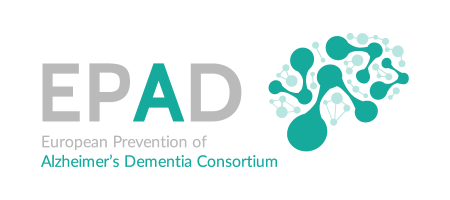“Regional associations of white matter hyperintensities and early cortical amyloid pathology”

Authors: Luigi Lorenzini, Loes T Ansems, Isadora Lopes Alves, Silvia Ingala, David Vállez García, Jori Tomassen, Carole Sudre, Gemma Salvadó, Mhnaz Shekari, Gregory Operto, Anna Brugulat-Serrat, Gonzalo Sánchez-Benavides, Mara ten Kate, Betty Tijms, Alle Meije Wink, Henk J M M Mutsaerts, Anouk den Braber, Pieter Jelle Visser, Bart N M van Berckel, Juan Domingo Gispert, Frederik Barkhof, Lyduine E Collij, the AMYPAD consortium, the EPAD consortium, ALFA cohort
Abstract:
White matter hyperintensities (WMHs) have a heterogeneous aetiology, associated with both vascular risk factors and amyloidosis due to Alzheimer’s disease. While spatial distribution of both amyloid and WM lesions carry important information for the underlying pathogenic mechanisms, the regional relationship between these two pathologies and their joint contribution to early cognitive deterioration remains largely unexplored.
We included 662 non-demented participants from three Amyloid Imaging to Prevent Alzheimer’s disease (AMYPAD)-affiliated cohorts: EPAD-LCS (N = 176), ALFA+ (N = 310), and EMIF-AD PreclinAD Twin60++ (N = 176). Using PET imaging, cortical amyloid burden was assessed regionally within early accumulating regions (medial orbitofrontal, precuneus, and cuneus) and globally, using the Centiloid method. Regional WMH volume was computed using Bayesian Model Selection. Global associations between WMH, amyloid, and cardiovascular risk scores (Framingham and CAIDE) were assessed using linear models. Partial least square (PLS) regression was used to identify regional associations. Models were adjusted for age, sex, and APOE-e4 status. Individual PLS scores were then related to cognitive performance in 4 domains (attention, memory, executive functioning, and language).
While no significant global association was found, the PLS model yielded two components of interest. In the first PLS component, a fronto-parietal WMH pattern was associated with medial orbitofrontal–precuneal amyloid, vascular risk, and age. Component 2 showed a posterior WMH pattern associated with precuneus-cuneus amyloid, less related to age or vascular risk. Component 1 was associated with lower performance in all cognitive domains, while component 2 only with worse memory.
In a large pre-dementia population, we observed two distinct patterns of regional associations between WMH and amyloid burden, and demonstrated their joint influence on cognitive processes. These two components could reflect the existence of vascular-dependent and -independent manifestations of WMH-amyloid regional association that might be related to distinct primary pathophysiology.
DOI: 10.1093/braincomms/fcac150
Published online: 15 June 2022 in the journal Brain communications
